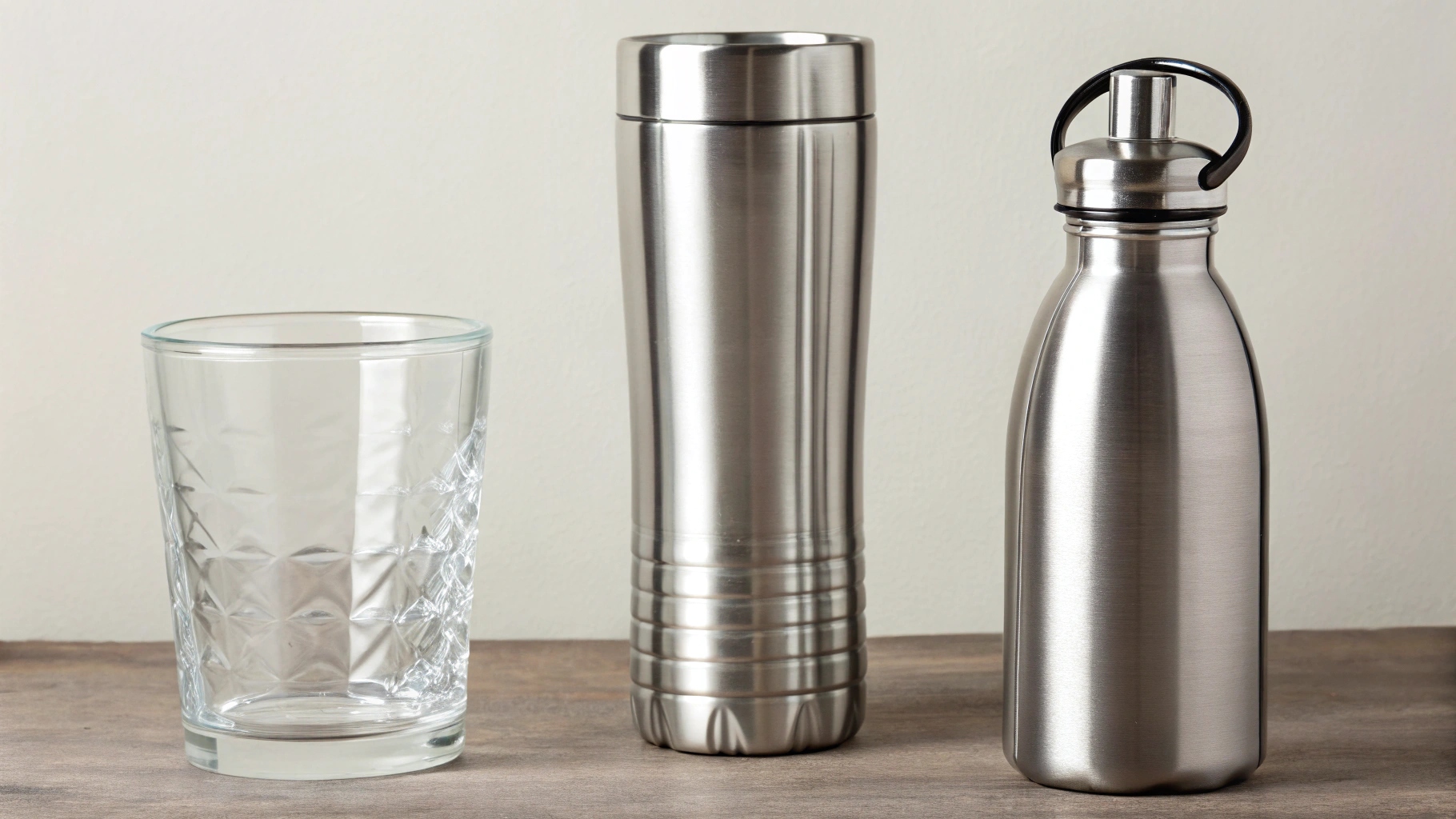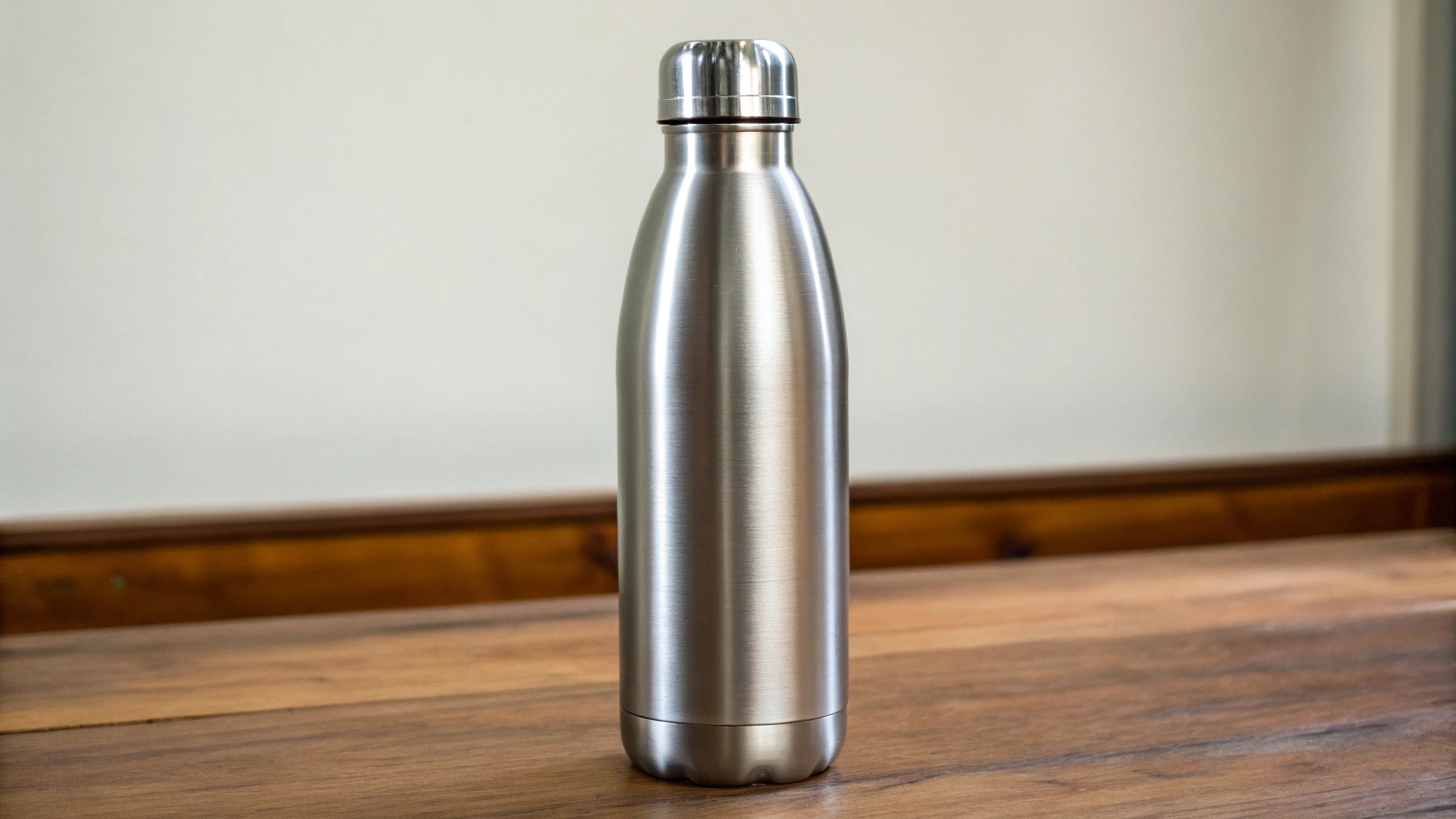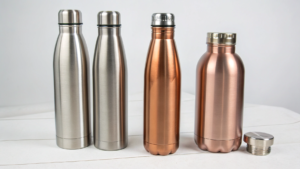Are Stainless Steel Water Bottles Safe to Drink From?
Choosing the right water bottle can be confusing. Worried about harmful chemicals leaching into your drink? Stainless steel offers a reliable and safe option for daily hydration.
Yes, high-quality stainless steel water bottles, especially those made from food-grade 18/8 (or 304) stainless steel, are generally considered very safe for drinking. They don't leach harmful chemicals like BPA or phthalates.
Many people I talk to in the corporate gifting world choose stainless steel for its durability and modern look. It really makes a brand stand out. But like any product decision, it's smart to understand the full picture before committing, whether it's for your team or your personal use. Let's dive a bit deeper into what makes these bottles tick and if they have any hidden drawbacks.
What are the disadvantages of a stainless steel water bottle?
Stainless steel bottles seem perfect for branding and daily use. But are there hidden downsides you should consider before ordering them for your team or event? Let's look at potential drawbacks.
Key disadvantages include potential denting if dropped, sometimes being heavier than plastic, higher initial cost, and potentially altering the taste of certain beverages for sensitive palates. They also don't allow you to see the liquid level inside.
While stainless steel is known for being tough, it's not completely immune to damage. I've seen perfectly good branded bottles get dropped, and while they still work, the dent can spoil the look a bit. They also tend to weigh more than plastic bottles, which is something to think about if you're gifting them to people who travel light or are very active. From my experience helping clients budget for corporate gifts, the initial cost per bottle is higher than basic plastic ones. This can be a factor when ordering in large quantities. A few people also mention a slight metallic taste, though this is usually less of an issue with high-quality 18/8 steel and proper cleaning. And of course, you can't quickly glance to see how much water you have left.
Key Drawbacks Explained
Let's break down these points further:
- Denting: While generally durable, a hard fall can cause dents. This typically doesn't affect the bottle's safety or function, but it can impact the visual appeal, which matters for a branded item representing your company.
- Weight: Compared directly to plastic, stainless steel bottles are noticeably heavier. Consider your target audience – if they prioritize lightweight gear for hiking or commuting, this could be a factor.
- Cost: The upfront investment per unit is definitely higher than for many plastic alternatives. However, their durability and perceived value mean they often provide better long-term branding impact, justifying the cost for many businesses.
- Taste: The slight metallic taste some users report is rare, especially with food-grade (18/8 or 304) stainless steel. Ensuring bottles are washed before first use and cleaned regularly usually prevents this.
- Opacity: You can't see the liquid level inside. This is usually just a minor inconvenience but worth noting.
Here's a simple table summarising these points for branding decisions:
| Feature | Disadvantage | Branding Consideration |
|---|---|---|
| Material | Can dent upon hard impact | Durability reflects well, but dents possible |
| Weight | Heavier than plastic alternatives | Consider user activity level |
| Cost | Higher initial price point | Perceived value vs. budget constraints |
| Taste | Potential metallic taste (rare) | Ensure quality material (18/8) |
| Transparency | Opaque - cannot see liquid level | Minor functional point |
What is the healthiest material for a water bottle?
Health is always a top priority when choosing drinkware for ourselves or as gifts. With so many materials available, how do you pick the safest one for hydration? Let's compare the top contenders.
Glass1 and food-grade stainless steel (like 18/8) are generally considered the healthiest options. Glass is inert and doesn't leach anything, while quality stainless steel is non-reactive and free from harmful chemicals like BPA and phthalates.

When we talk about the "healthiest" choice, we're looking for materials that won't add anything unwanted to our water and are easy to keep clean, preventing bacterial growth. Both glass and high-quality stainless steel fit this description well, but they have different practical considerations, especially when thinking about them as corporate gifts.
Comparing Healthy Materials
Let's look at the common healthy options:
- Glass: Its biggest advantage is being completely non-reactive. Water tastes pure, and there's zero risk of chemical leaching. However, its main drawback is fragility. Dropping a glass bottle often means it's broken. This makes it a riskier choice for corporate gifts, as breakage during shipping or daily use can happen. It can also be heavier than steel.
- Stainless Steel (Food-Grade 18/8 or 304)2: As we've discussed, this is a fantastic, safe option. It doesn't react with drinks, stands up well to daily use, and resists bacterial growth if cleaned properly. Its durability makes it a much more practical choice for branded merchandise that needs to last.
- BPA-Free3 Plastics (like Tritan™): Certain modern plastics are specifically designed to be free from BPA and other known harmful chemicals. They offer the benefits of being lightweight and shatterproof, which is very practical. However, some people still have concerns about potential leaching of other plastic compounds or the long-term effects of microplastics. They also might not feel as premium as steel or glass.
Here's a quick comparison:
| Material | Health Pros | Health Cons / Practicality Issues | Gifting Suitability |
|---|---|---|---|
| Glass | Inert, no leaching, pure taste | Fragile, heavier | Higher risk |
| Stainless Steel | Non-reactive, durable, no BPA/phthalates | Potential metallic taste (rare), opaque | Excellent |
| BPA-Free Plastic | Lightweight, shatterproof, no BPA | Potential microplastics, less durable | Good (Budget/Use) |
From my experience in the gifting industry, while glass is pure, stainless steel often hits the sweet spot between health, durability, perceived value, and branding potential.
Is there BPA in stainless steel water bottles?
Concerns about BPA leaching from plastic containers are very common. Does this worry extend to popular stainless steel alternatives used for water bottles? Let's clarify the situation.
No, stainless steel itself does not contain Bisphenol A (BPA). BPA is an industrial chemical primarily used to make certain plastics and resins. High-quality stainless steel water bottles are inherently BPA-free, making them a safe choice.

It's completely understandable why people ask about BPA. We hear a lot about potential health risks associated with it, particularly endocrine disruption, and everyone wants to avoid unnecessary exposure, especially in things we drink from every day. When plastic bottles first faced scrutiny over BPA, stainless steel emerged as a trusted alternative precisely because it doesn't have this issue.
Understanding BPA and Stainless Steel
Let's be clear on the materials:
- What is BPA? Bisphenol A is a chemical component used in the manufacturing of polycarbonate plastics (the hard, often clear type) and epoxy resins (sometimes used as liners in food cans). The concern is that BPA can migrate from the container into the contents.
- Stainless Steel's Composition: Stainless steel is a metal alloy. The common food-grade type, 18/8, is made mostly of iron, with 18% chromium and 8% nickel added for corrosion resistance and durability. BPA is simply not part of its chemical makeup. There's no BPA in the metal itself.
- A Note on Lids: This is where a little caution was needed in the past. Some older or cheaper bottles might have had lids made with plastic parts containing BPA. However, today, any reputable manufacturer I work with uses BPA-free plastics (like polypropylene, PP #5) or even stainless steel components for the lid and seal. When sourcing branded bottles for clients, we always confirm the lid materials are also BPA-free, as the entire product needs to reflect quality and safety.
Here’s a breakdown:
| Component | Material | BPA Presence? | Note |
|---|---|---|---|
| Bottle Body | Stainless Steel | No | Inherently BPA-free |
| Lid (Common) | BPA-Free Plastic | No | Usually specified by good brands |
| Lid (Less Common) | Plastic with BPA | Yes (Very Rare Now) | Avoid; not used by responsible suppliers |
| Lid (Alternative) | Stainless Steel | No | A premium, totally BPA-free option |
So, when you choose a quality stainless steel water bottle, you can be confident the main body is free from BPA. It’s a key selling point and a message of reassurance for anyone receiving it as a gift.
Conclusion
Stainless steel bottles are a safe, durable, and stylish hydration choice. They are inherently BPA-free, making them healthy and an excellent option for impactful corporate gifting programs.
-
Learn why glass is considered a healthy option for hydration and its advantages over other materials. ↩
-
Discover the advantages of Food-Grade 18/8 stainless steel for health and durability, making it a top choice for water bottles. ↩
-
Understanding BPA-Free labels is crucial for ensuring safe hydration. Explore this link to learn more about BPA and its implications for health. ↩





